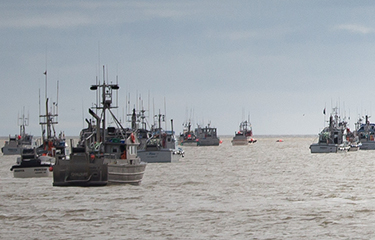Bristol Bay sockeye season plagued with uncertainty over pricing, supply glut

Uncertainty continues to cloud the 2023 sockeye salmon season in Bristol Bay, Alaska, U.S.A., as the fishery heads toward what has historically been its peak period.
Fishing in one of the world's most-productive sockeye salmon fishing grounds began on 1 June, but fishers are frustrated that processors have yet to disclose the price they intend to pay for this year’s catch.
Preliminary market prices released so far aren’t promising. So far, only Trident Seafoods has disclosed details, offering a base price of USD 0.60 (EUR 0.55) per pound for False Pass sockeye. This sharply contrasts to last year, when fishermen netted a base price of USD 1.15 (EUR 1.06) per pound for their catch.
“Fishermen are not optimistic about this year's price,” Bristol Bay Regional Seafood Development Association (BBRSDA) Executive Director Andy Wink told SeafoodSource. “It looks like it's going to be a situation where harvest volume and price will probably be way down from last year.”
Wink said the biggest factor pushing down prices is a glut in frozen headed and gutted (H&G) sockeye caused by last year's record catch of 60.1 million sockeye salmon – topping the previous record of 44.3 million sockeye set in 1995.
“Last year around this time, we were kind of around the USD 4.50 [EUR 4.13], maybe even up to USD 5.00 [EUR 4.59], range for frozen H&G if you could find it,” he said. “Now, things are probably [trending] in the USD 3.00 to USD 3.25 [EUR 2.76 to EUR 2.98] range, so it’s a pretty big difference.”
This year’s catch is still projected to be among the five strongest in the last 20 years and 40 percent greater than the average annual run recorded since 1963, but it's not clear where all the fish will go, consdering significant amounts of last year's catch is still in cold storage.
Costco, Whole Foods, Albertson’s, Trader Joe’s, Kroger, and QFC all offered sockeye specials in the spring, before the Bristol Bay season started, and ASMI has put more money into a sockeye-focused marketing campaign. But the product glut, combined with the harm done by rising inflation, has resulted in a decline in overall demand for Alaska sockeye, according to Wink.
In the meantime, Wink said many fishers are ...
Photo courtesy of the Bristol Bay Regional Seafood Development Association





Share